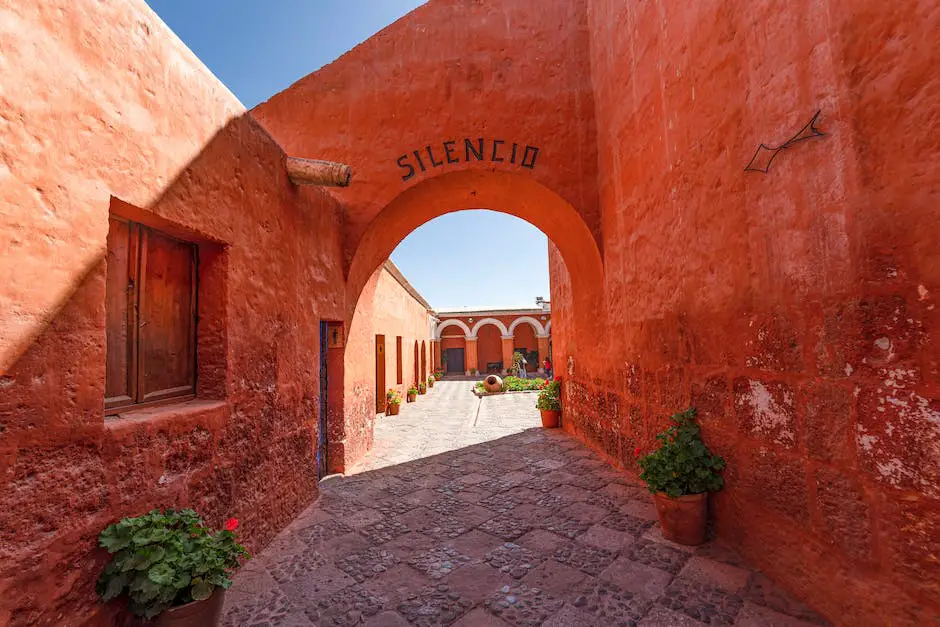
Imagine wandering through a city where the past whispers from every corner, where the stones carry stories, and the buildings reflect a blend of cultures that have evolved over centuries. That’s Arequipa, Peru, for you—a place where architecture isn’t just a matter of structures but a canvas of history and culture. Let’s dive into the architectural journey of this fascinating city, shall we?
The Roots of Arequipa’s Architectural Identity
Known as the ‘White City,’ Arequipa stands out with its use of sillar, a pearly white volcanic rock that gives the city its distinctive glow. The early architecture of Arequipa was heavily influenced by indigenous techniques, which were later infused with Spanish colonial designs post-conquest. This blend created a unique mestizo style that’s both functional and aesthetically pleasing.
One can’t help but marvel at the ingenuity of the early Arequipans. They developed earthquake-resistant methods, knowing all too well the seismic activity of the region. These methods have stood the test of time, as many historical buildings remain intact despite the tremors that have shaken the city over the years.
The Spanish Influence and the Birth of Mestizo Baroque
As the Spanish settled in, they brought with them their own architectural styles, which merged with the local traditions. This gave rise to the Mestizo Baroque style, a true testament to cultural fusion. The Basilica Cathedral of Arequipa, standing proudly at the Plaza de Armas, is a prime example. Its intricate façade and majestic interior are a sight to behold.
But it’s not just the grandeur of churches that tells the story of Arequipa’s architecture. It’s also in the details—the wrought ironwork, the ornate wooden balconies, and the courtyards that speak of a time when Spanish aristocracy walked these streets.
Continuity and Change in the Republican Era
Fast forward to the Republican era, and you’ll notice a shift in Arequipa’s architectural landscape. The city began to embrace neoclassical and neo-Renaissance styles, reflecting the new political and cultural aspirations of the time. Buildings like the Goyeneche Palace showcase the elegance and refinement that characterized this period.
Yet, even as new styles emerged, Arequipa’s architects never turned their backs on the city’s roots. They continued to incorporate sillar and traditional motifs, ensuring that the essence of Arequipa’s identity remained intact.
Modern Times: Blending the Old with the New
Today, Arequipa is a city that honors its past while looking forward to the future. Contemporary buildings stand alongside historical ones, creating a dynamic urban tapestry. The city’s commitment to preserving its architectural heritage is evident in the careful restoration of colonial buildings and the adaptive reuse of old structures for modern purposes.
Take, for instance, the former San Camilo market. It’s been transformed into a vibrant space that respects the original architecture while serving the needs of today’s Arequipans. It’s this ability to adapt and innovate that keeps the city’s architecture alive and relevant.
FAQs About Arequipa’s Architecture
- What makes Arequipa’s architecture unique?
Arequipa’s architecture is unique due to its use of sillar, the mestizo baroque style, and its earthquake-resistant construction methods. The city’s architecture is a blend of indigenous and Spanish colonial influences, creating a distinctive aesthetic.
- Can you visit historical buildings in Arequipa?
Absolutely! Many of Arequipa’s historical buildings are open to the public, including the Basilica Cathedral, the Santa Catalina Monastery, and various colonial mansions that have been converted into museums.
- How has Arequipa’s architecture changed over time?
Over time, Arequipa’s architecture has evolved from indigenous styles to Spanish colonial mestizo baroque, and later to neoclassical and neo-Renaissance influences during the Republican era. In modern times, the city has seen a mix of historical preservation and contemporary development.
Conclusion: A Living Legacy
In conclusion, Arequipa’s architecture is more than just buildings; it’s a narrative of resilience, innovation, and cultural synthesis. From the use of sillar in its early constructions to the mestizo baroque style that emerged from Spanish influence, and onto the neoclassical elegance of the Republican era, Arequipa has managed to preserve its architectural heritage while embracing modernity.
The city’s commitment to maintaining its unique identity is evident in every corner, making it a living museum that continues to enchant visitors and locals alike. Whether you’re an architecture buff, a history enthusiast, or simply someone who appreciates beauty, Arequipa’s architectural evolution is a journey worth taking.
So, next time you find yourself in this corner of Peru, take a moment to look around. Let the stones tell you their stories, and you’ll understand why Arequipa’s architecture is not just a feature of the city but the very heart of it.
And remember, whether you’re marveling at the Basilica Cathedral or wandering through the contemporary streets, you’re walking through pages of history that continue to shape the present. Arequipa’s architecture is a testament to the city’s past, present, and future—a legacy carved in sillar and etched in the hearts of its people.